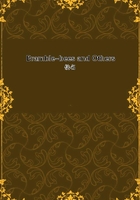
第78章 THE POISON OF THE BEE.(5)
But fossil instincts, they insist, would show us intermediary stages, first, second and third rungs; they would show us the gradual passing from the casual and very incorrect attempt to the perfect practice, the fruit of the ages; with their accidental differences, they would give us terms of comparison wherewith to trace matters from the simple to the complex. Never mind about that, my masters: if you want varied instincts in which to seek the source of the complex by means of the simple, it is not necessary to search the foliations of the coal-seams and the successive layers of the rocks, those archives of the prehistoric world; the present day affords to contemplation an inexhaustible treasury realizing perhaps everything that can emerge from the limbo of possibility. In what will soon be half a century of study, I have caught but a tiny glimpse of a very tiny corner of the realm of instinct; and the harvest gathered overwhelms me with its variety: I do not yet know two species of predatory Wasps whose methods are exactly the same.
One gives a single stroke of the dagger, a second two, a third three, a fourth nine or ten. One stabs here and the other there; and neither is imitated by the next, who attacks elsewhere. This one injures the cephalic centres and produces death; that one respects them and produces paralysis. Some squeeze the cervical ganglia to obtain a temporary torpor; others know nothing of the effects of compressing the brain. A few make the prey disgorge, lest its honey should poison the offspring; the majority do not resort to preventive manipulations. Here are some that first disarm the foe, who carries poisoned daggers; yonder are others and more numerous, who have no precautions to take before murdering the unarmed prey. In the preliminary struggle, I know some who grab their victims by the neck, by the rostrum, by the antennae, by the caudal threads; I know some who throw them on their backs, some who lift them breast to breast, some who operate on them in the vertical position, some who attack them lengthwise and crosswise, some who climb on their backs or on their abdomens, some who press on their backs to force out a pectoral fissure, some who open their desperately contracted coil, using the tip of the abdomen as a wedge. And so I could go on indefinitely:
every method of fencing is employed. What could I not also say about the egg, slung pendulum-fashion by a thread from the ceiling, when the live provisions are wriggling underneath; laid on a scanty mouthful, a solitary opening dish, when the dead prey requires renewing from day to-day; entrusted to the last joint stored away, when the victuals are paralysed; fixed at a precise spot, entailing the least danger to the consumer and the game, when the corpulent prey has to be devoured with a special art that warrants its freshness!
Well, how can this multitude of varied instincts teach us anything about gradual transformation? Will the one and only dagger-thrust of the Cerceris and the Scolia take us to the two thrusts of the Calicurgus, to the three thrusts of the Sphex, to the manifold thrust of the Ammophila? Yes, if we consider only numerical progression. One and one are two; two and one are three: so run the figures. But is this what we want to know? What has arithmetic to do with the case?